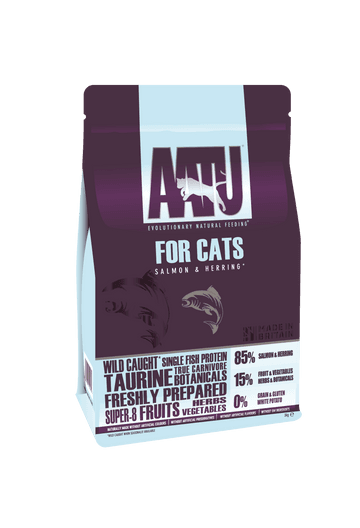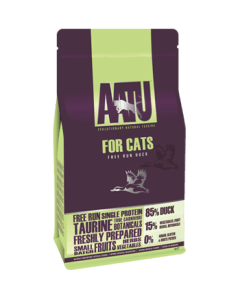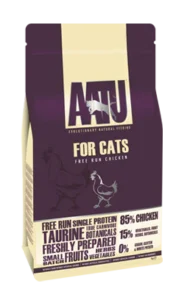AATU
Salmon & Herring /ALS/
ALS
Regular
Indoor and Outdoor
Click to reveal the score breakdown
Tap to view ingredients, guaranteed analysis and more
Ingredients
Salmon (includes 45% Salmon, 40% Dehydrated Salmon)
85%
Sweet Potato
Chickpeas
Salmon Stock
Peas
Lucerne
Tapioca
Apple
Cranberry
Pear
and also:
Blueberry, Mulberry, Orange, Bilberry, Cowberry, Carrot, Tomato, Chicory, Peppermint, Parsley, Cinnamon, Marigold, Stinging Nettle, Camomile, Rosehip, Yucca, Spirulina, Seaweed, Aniseed, Fenugreek, Oregano, Sage, Marjoram, Thyme
Vitamins and Additives
Vitamin A 25000 IU
Vitamin D3 1700 IU
Vitamin E 330 mg
and also:
Taurine (1500mg), L-Carnitine (200mg), Ferrous Sulphate Monohydrate (600mg), Zinc Sulphate Monohydrate (310mg), Manganous Sulphate Monohydrate (70mg), Cupric Sulphate Pentahydrate (45mg), Calcium Iodate Anhydrous (3.64mg), Sodium Selenite (0.41mg)
Notes
The score is calculated after relocation of fresh meat or fish ingredient(s) as explained in the calculation rule #7 in Chapter 1.
Guaranteed Analysis
Crude Protein
34%
Crude Fat
18%
Crude Fiber
2.5%
Moisture
8%
Crude Ash
9.5%
Omega 3
4.3%
Omega 6
2.3%
Notes
The score is calculated after relocation of fresh meat or fish ingredient(s) as explained in the calculation rule #7 in Chapter 1.
Product last updated: April 22, 2023, 9:36 AM
Please hold on while we’re getting the best offers for you
7100



